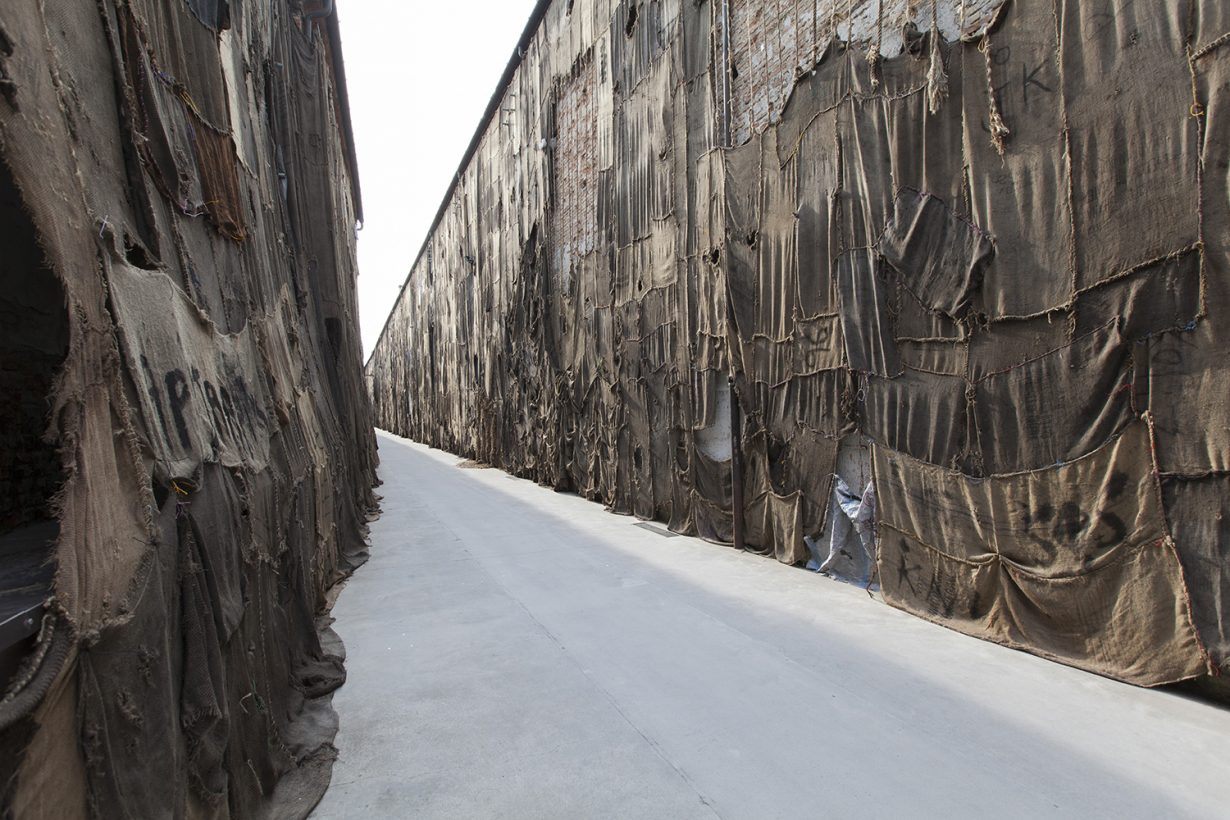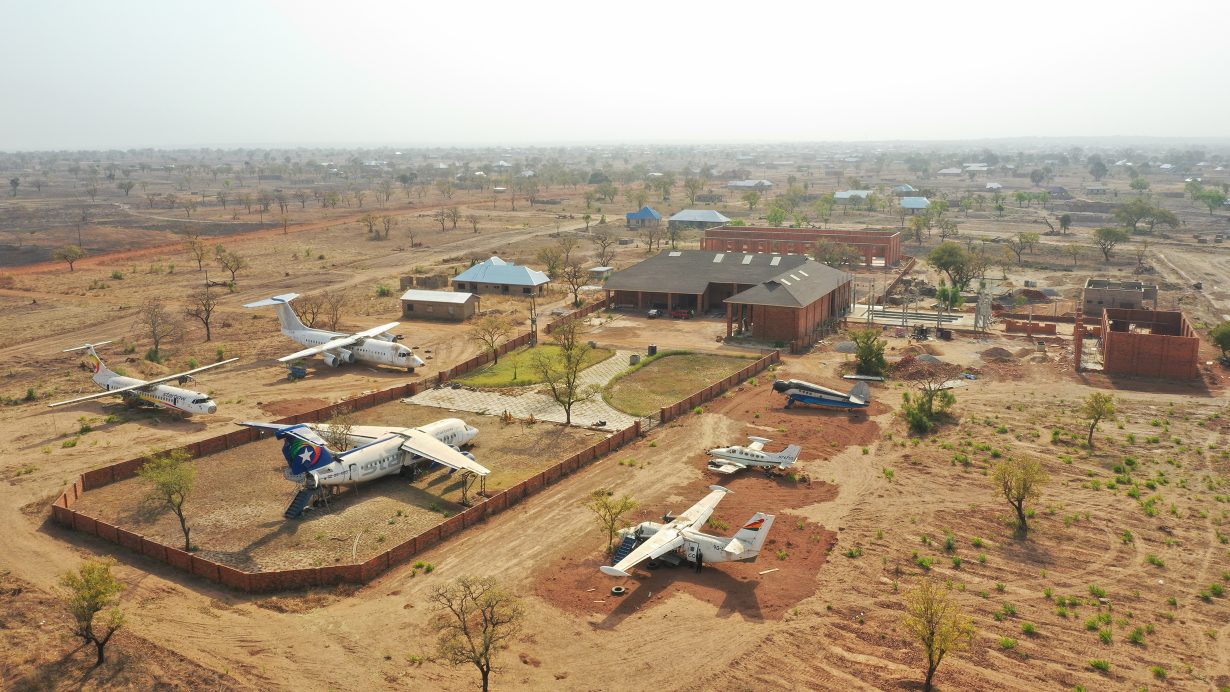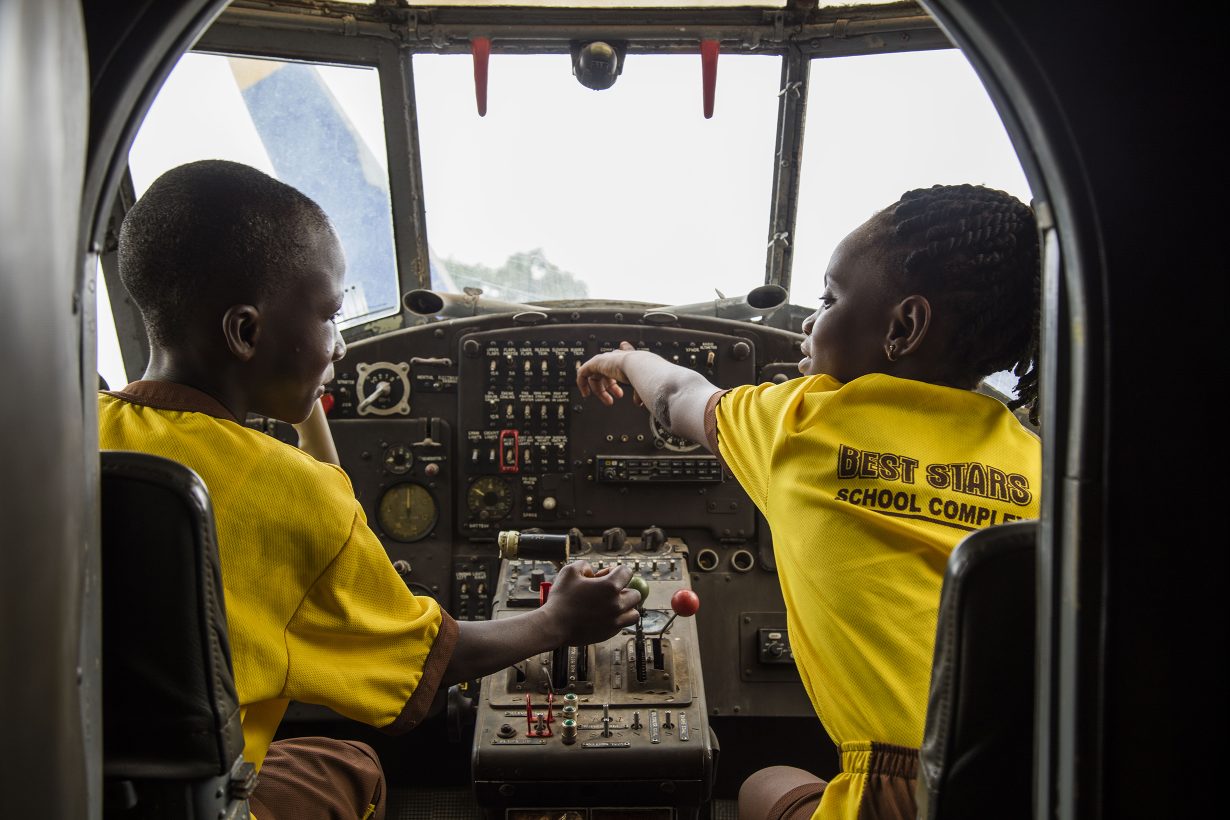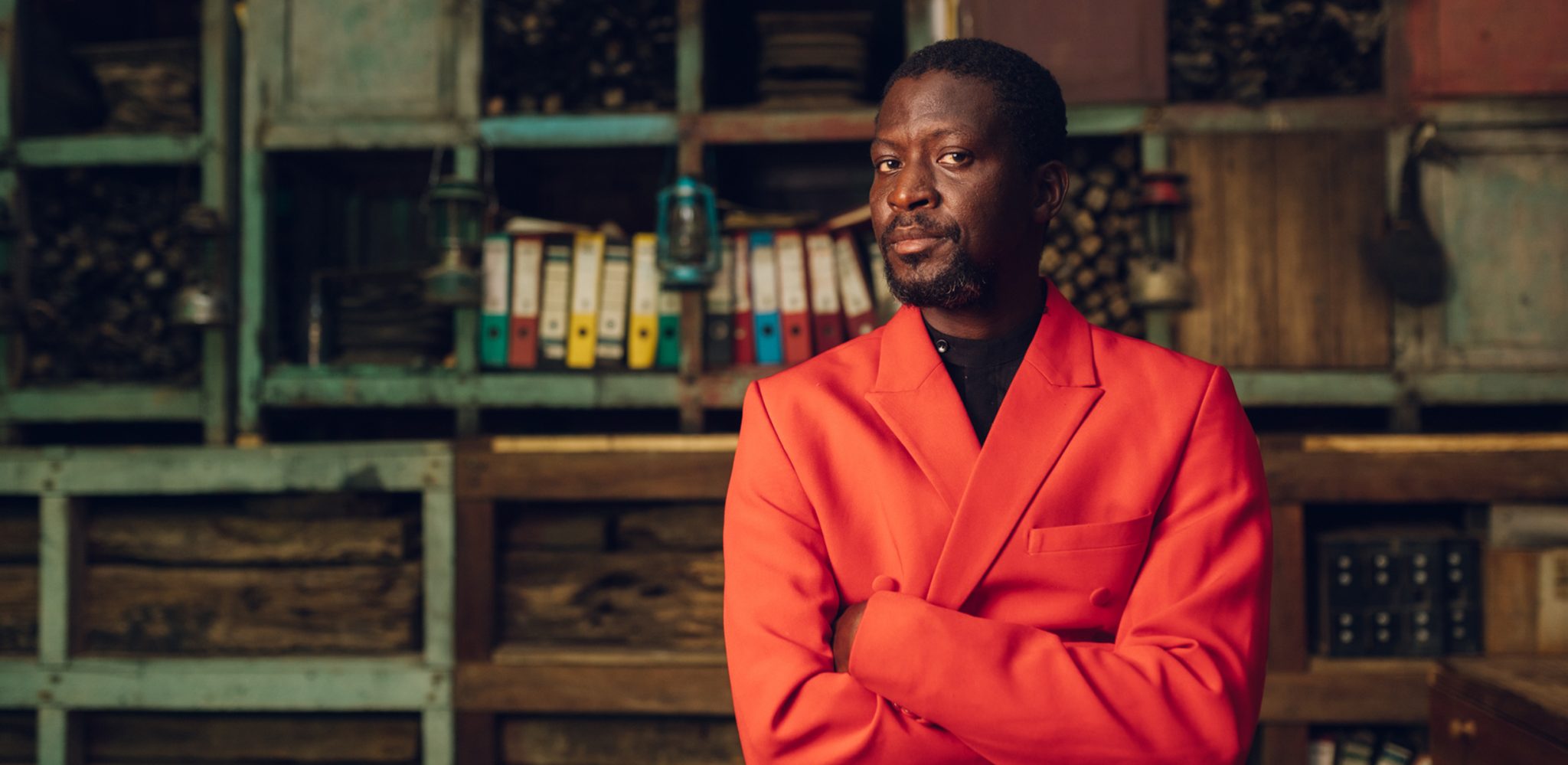The Ghanaian artist focuses on the art space as a site for experimentation, regeneration, restitution and repatriation
Reality is a very subjective affair. I can only define it as a kind of gradual accumulation of information; and as specialization. If we take a lily, for instance, or any other kind of natural object, a lily is more real to a naturalist than it is to an ordinary person. But it is still more real to a botanist. And yet another stage of reality is reached with that botanist who is a specialist in lilies. You can get nearer and nearer, so to speak, to reality; but you never get near enough because reality is an infinite succession of steps, levels of perception, false bottoms, and hence unquenchable, unattainable. You can know more and more about one thing but you can never know everything about one thing: it’s hopeless. So that we live surrounded by more or less ghostly objects – that machine, there, for instance. It’s a complete ghost to me – I don’t understand a thing about it and, well, it’s a mystery to me, as much of a mystery as it would be to Lord Byron. – Vladimir Nabokov, BBC television interview, 1962
Let’s go back to 2015 and recall the 56th Venice Biennale, All the World’s Futures, curated by Okwui Enwezor. Ibrahim Mahama’s monumental site-specific installation Out of Bounds steals the show; his collage of jute sacks, stitched and woven together, are draped over the long external walls of the buildings that make up the Arsenale, transforming these corridor-like spaces while providing a visual history of the narratives of production, trade and the more human tales that are embodied by these sacks. According to Enwezor, his edition of the world’s most famous biennial offered ‘a filter through which to reflect on both the current state of things and the appearance of things’. For Mahama, this theme and its possibilities were important considerations: there is to be no dissonance between the ‘reality’ – a word Nabokov famously believed should always appear in quotation marks – of the world and its reflection in art.

In the seven years since that audacious introduction to the artworld in Venice, Mahama has gone from relatively unknown to a name that is mentioned in nearly every conversation about art and museology in Africa. He is backed by White Cube, a top international blue-chip gallery, and has been invited as a participating artist to the major global art events since that edition of Venice: Documenta 14, in 2017; Ghana Freedom, the inaugural Ghana Pavilion, 58th Venice Biennale, 2019; Lagos Photo Festival, 2016; Lubumbashi Biennale, Democratic Republic of the Congo, 2019. His monumental installations, particularly the jute sacks dropped over buildings, are among the most recognisable art interventions around the world. Unrelated but similarly, over this same period the growth in Africa of event-based art programmes such as festivals, biennials and fairs have also contributed significantly in drawing attention to art from the continent.
However, the pandemic and the upheaval it has wrought have mitigated this continuity and exposed Africa’s infrastructural deficits. Contemporary art museums are at a premium, and even when available they are largely unwieldy, expensive to run or inoperable. Celebrated museums and art spaces such as Zeitz MOCAA offered little and struggled to stay open; in the dystopia of the pandemic, rather than offer safe spaces for artists they were rather like mausoleums. This condition of museology is not unique to Africa. It is just the case that several new museums in Africa model themselves on Western museums and hierarchies that make them ill-suited for the continent. Conversely, art exhibitions in relation to Africa and its diaspora have been dominated over the past few decades by futurism, such as with Enwezor’s All the World’s Futures and its postulations about time, imaginaries and dystopia/utopia; conditions presented to us by the recent pandemic. But Mahama has never been content with theorising about utopian ideas around futures and imaginaries. He seeks to leverage his position and renown to help remediate present conditions in Ghana by building infrastructure in order to enable long-term collaborations between citizens and institutions; between artists, curators and cultural producers across the continent and in diaspora through institution-building towards a fundamentally engaged and integrated methodology of art practice for the benefit of society at large. Savannah Contemporary Art Centre (SCCA), Red Clay Studio and Blaxtarlines are institutions Mahama has funded, founded, built and nourished in his native Ghana – and, significantly, not in Accra, the capital, but in Tamale, in the unfashionable and oft-overlooked agricultural northern part of the country. These initiatives, led by SCCA, are exemplars of museums of the future: alive, metabolic, nimble and experimental. They are designed to engage with the community they purport to serve and are free at the point of entry. The vital civic role museums are intended to play is realised at SCCA in Tamale.

During our conversation via Zoom, Mahama recounts a pivotal incident that shifted his perspective and sparked the urgency to build SCCA in Tamale. In 2014, while attempting to build a scaffold structure in the market complex, and then to cover it with jute sacks, he found that while the market women were supportive of and intrigued by the project, the men were not. The women were intrigued by the presence of a university graduate in their space, and by his interest in creating an artistic intervention in the marketplace. The men were for the most part hostile, accusing him of being a spy or of having sinister intentions. The women defended Mahama and calmed the men down. Nevertheless it gave birth to SCCA as an idea and catalysed the scaling up of his studio as a wider space for open experimentation and artmaking, and, as importantly, to make art practice better understood in his hometown. The deeper philosophical idea was, he says, “to make work that would somehow extend the legacy of these women and their children and grandchildren by building something capable of changing the narrative around artistic work for generations to come”. Mahama thinks of SCCA as that artwork that will transcend time.
SCCA is evolving, and through collaborations and partnerships with similar and diverse institutions in Africa like Congolese Plantation Workers Art League (CATPC), my own African Artists’ Foundation (AAF) Lagos, and Centre for Contemporary Art Lagos, Mahama creates opportunities and linkages that underscore both intergenerational and transmedia relationships, filling a gap that exists in art practice across Africa. Art spaces in Africa tend to memory-hole the colonial era as they oscillate between obsessing about contemporary art and artists, and about traditional artefacts. It is as though the twentieth century never happened. Mahama and the institutions he has founded in Ghana offer a way out of this impasse by focusing on the art space as a site for experimentation, regeneration, restitution and repatriation, not necessarily by waiting for a direct return of objects, but of ideas and modern art-history both tangibly and symbolically. His is an exercise in reclaiming the commons that also serves to shift the decolonising paradigm away from Western museums and towards a location-specific, solution-oriented approach.

A perfect example is the imaginatively titled Dig Where You Stand project, a series of travelling exhibitions that offers a new model of engagement with questions of decolonisation, restitution and repatriation. Dig Where You Stand showcases sustainable models of rerouting existing systems of legitimation and market-value creation that have been perpetuating the extraction of resources and capital away from the African continent. The exhibition invites artists who work within the circularity of the artworld economies to participate in strategies of liberation from the ongoing extractive processes both in the artworld and the broader economy. Dig Where You Stand brings together examples of regenerative artistic practices and acts as a regenerative agent in itself. The artists and local communities will explore generative strategies of intervention, cooperation, activism and pedagogy. It is a sort of labour movement within the artworld itself.
In Mahama’s words, “SCCA was one of those products, in a way, that an artist could use the residue of his work in terms of capital generated out of it in order to build, let’s say, an institution in a form of artistic practice, that could allow for the resurrection of other artists’ works”. SCCA’s first focus exhibition was a retrospective on the work of the influential modernist painter Galle Winston Kofi Dawson curated by Bernard Akoi-Jackson. SCCA’s artistic director, Selom Kudjie, is responsible for programming and regular activities at the centre. Mahama balks at Western ideas around conservation, viewing them as undermining of artistic progress in Africa; rather, he sees the function of institutions in terms of their being drivers of progress and mechanisms through which to engineer the refreshing of ideas. He’s a believer in “build it and they will create”. Institutions that can influence artists to explore as widely as possible in terms of materials that they can work with are vital. Mahama is part of an incipient but disparate collection of artist-led initiatives on the African continent (Michael Armitage, Zanele Muholi and Barthélémy Toguo are doing similar work) that are keenly aware of the mechanics of the artworld and seek to avoid further widening the gap between artists and their communities as a result of the commercial value placed on artworks by bringing their art, positionality, influence, economy and merits of current efforts around decolonisation from global institutions, often based in Europe, to decolonising the territories from which they have been expropriated and looted. This logic is embodied in Mahama’s ongoing exhibition where his signature jute sack installation is draped over the eponymous White Cube in Lusanga, Congo, at CATPC, an artist-run institution on the very first palm-oil plantation, founded by Lever Brothers, now Unilever, itself a sponsor of museums and academic research. Beyond the well-worn narrative trope of institutional critique, Mahama sees this as a model for bottom-up infrastructure-building both physical and intellectual for African communities.

For his first solo gallery exhibition in Hong Kong, Mahama reverts to the defining period in modern postcolonial African history. A period during which China, the United States and the Soviet Union all scrambled for global influence and the term, ‘Third World’ was coined to refer to nations to be won over by these competing power blocs, whether the Communist Bloc (East) or NATO (West). From the late 1950s to the early 60s, West African nations, led by Mahama’s native Ghana, had fought for and obtained independence from British colonial rule. These newly formed nations were determined to chart their own course. The famous maxim of Kwame Nkrumah, Ghana’s first president, ‘We face neither East nor West; we face forward’, captured the optimism, self-assurance and Pan-African feeling of those days. The chaos, conflicts and betrayals that derailed dreams of a harmonious Pan-African future following the optimism of the 1960s wave of independence is reflected in popular culture: in Fela Kuti’s Afrobeat music and in the works of novelists like Chinua Achebe (No Longer at Ease, 1960) and more recently Chimamanda Ngozi Adichie (Half of a Yellow Sun, 2006). Mahama did not therefore have to search far for inspiration: the titles of each work in his new series of textile paintings are drawn from Kuti’s 1970s catalogue; the exhibition title is taken from Adichie’s seminal work. For Mahama, literature has always been a source of artistic inspiration. The new fabric paintings follow Mahama’s familiar refrain of circulation and exchange, and correspond to the cultural history of cloth materials used to define, stereotype and shape African identities (while actually manufactured in China and Europe). The cloth swatches have been collected since 2012 through a process of Mahama’s exchange of old, worn, historically charged cloth for new cloth from traders, mostly women in Ghana. The painting Teacher don’t teach me nonsense (2013–22) is a piece that embodies all the ideas Mahama is interested in presenting.
Last November, at Lagos Photo Festival, I was moderating a talk between Mahama, artist Renzo Martens, the Smithsonian’s National Museum of African Art director Ngaire Blankenberg and Hannah O’Leary of Sotheby’s on the ‘importance of creating regenerative economies for communities where artists live and work’, and I posed a question to Ibrahim in which I erroneously doubled the duration of his practice. He gently and humorously corrected me in a knowing manner, as though it was something all too familiar to him. Indeed it is. Anyone who has spent time with Mahama leaves with the feeling of a session with an older, wiser uncle. Mahama wears everything about him with a lightness that is metamorphosed and embodied through objects, narratives or conditions. For Mahama, art is a reality that consists of a ‘gradual accumulation of information; and as specialization’ in the sense described by Nabokov. The paradox with Mahama is that he is constantly collecting, archiving and studying minute artefacts and fragments, tiny objects – be they discarded shoeboxes, sewing machines or jute sacks – as the building blocks and colour palettes for the creation of something monumental in the future. In much the same way, he aggregates people, diverse talent, as he builds up his community. And as a builder, he knows that one never builds alone. Mahama subscribes to the Burkina Faso proverb ‘If you want to go fast, go alone; if you want to go far, go together’.
Azu Nwagbogu is founder and director of African Artists’ Foundation, Lagos
